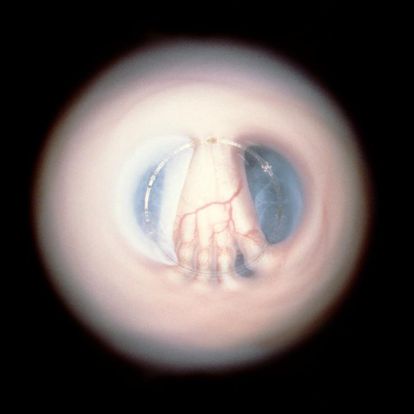13 weeks and 2 days pregnant

This scan shows a cross-section of your baby’s brain, with the two hemispheres clearly seen. From this point on, your baby’s brain measurement from one side to the other, taken just above the ear, is used as a reliable indicator of her growth and development.
Even at this early stage of development, your baby has started to urinate, although in very small quantities.
Your baby’s bladder now fills and empties every 30 minutes; she swallows the amniotic fluid, filters it through her kidneys, and then passes it as urine. The bladder volume is tiny at this stage, and even by 32 weeks it will only be 10ml, reaching 40ml by 40 weeks. Your baby produces very dilute urine, having only a limited capacity to reabsorb water in the kidney to concentrate the urine. However, the placenta performs most of the kidney functions until birth.
Your baby’s blood system can now make and break down blood clots. The placenta has been able to form clots for some time, reducing the risk of bleeding. A small number of white blood cells are now being produced by your baby but she is still relying on yours to fight infection. Her red blood cells contain haemoglobin that transfers oxygen to all the cells of the body. Before birth she has several forms of haemoglobin that differ from yours. These are more stable at a lower acidity and bind more easily to oxygen. This allows your baby’s body to extract the oxygen in your haemoglobin for her own use.

The toes are now fully formed and separated, and their individual bones can be clearly discerned on an ultrasound.
I’m expecting triplets. How will my antenatal care differ?
All the usual risks of pregnancy are increased for women having more than one baby. This is partly because hormone levels are higher when there is more than one baby, and, in your case, it will be hard work for your body to carry and nourish three fetuses.
You can expect to be referred to an obstetrician, who will plan your antenatal care with you. You’ll have more frequent checkups and scans to check the health and progress of your babies. Although many of the risks are outside your control, if you attend all your appointments and look after your health, it is likely that you will have three healthy babies.
With triplets, you will probably need to give birth by Caesarean section. The average pregnancy length for triplets is 34 weeks.
For more information about multiple pregnancy and details of local support groups, contact the Twins and Multiple Births Association (TAMBA).
This involves testing the amniotic fluid and is normally done at 15–20 weeks. It may be offered:
Where there’s a family or pregnancy history of a genetic problem.
To older women who are more at risk of having a baby with a chromosomal abnormality.
When a screening test has shown there is a high risk of a chromosomal abnormality.
Be the first to support
Be the first to share
Comment (0)
Related Blogs & Vlogs
No related events found.
Loading more...